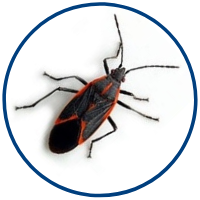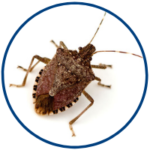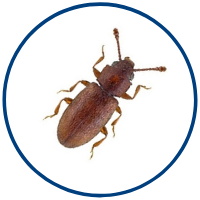Fall Pests: Migration Indoors and Prevention Tips
With the cooler temperatures comes the threat from a group of fall related pests. We call these pests fall invaders and they survive the winter through the protection afforded by structures. They migrate towards buildings in search of a warm resting spot to spend the cold winter. This resting spot may include the wall, ceiling, and attic voids of buildings.
When they Migrate Indoors
Changes in daylight hours and cooler temperatures can trigger the fall invaders indoor movements. Normally it is only adults, which move indoors. During their winter stay, they do not reproduce or feed. Examples of insects which use this winter survival tactic include cluster flies, multicolored Asian lady beetles, brown marmorated stink bugs and boxelder bugs. A second type of fall invaders arrives in our structures more by accident. These insects may be attracted to building lighting and are tied to exterior environmental conditions. The majority of these are mold feeders which are associated with grain in poor condition. Examples of these beetles include the foreign grain beetle, and hairy fungus beetle. Here are a few highlighted species.

Box Elder Bugs
Probably the most common of the fall invading insects, this black and red marked bug feeds on box elder and maple trees. It is ½” long as an adult, mostly black in color with red lines marking the wings and the thorax or area behind the head.

Brown Marmorated Stink Bug
In the eastern and Midwestern parts of the U.S. this pest has become commonplace. It more recently has become established as far as the west coast. It is both an agricultural pest and structural pest. Adults are brown in color, 5/8” in length and a body shape which is shield-like.

Foreign Grain Beetle
The foreign grain beetle is a common late summer and fall invader. It feeds on grains in poor condition and the fungus associated with the deteriorating grain. They are 1/16”- 1/8” in size.
Prevention Tips
Exclusion: Ideal temperatures for interior overwintering locations are in the 40-50° F range which is typically found in the exterior wall voids of buildings. Denying the insects access is the first line of defense in control. Use of sealants, door seals and screens are the primary exclusion tools in preventing entry. Seal after insects leave the building and before re-entry in the fall or late summer.
Reduce Attraction: Since some of these insects, like the foreign grain beetle, can be attracted to structures by light. Use exterior lighting which is the least attractive to insects and when possible, illuminate buildings with lights mounted away from the structure. Many of the fall invaders will be more attracted to building exteriors where there are contrasting colors. Although it may be impractical to paint or change the building color, this knowledge can be useful in making sure that areas of contrasting colors are effectively sealed.
Insecticidal Control: Perimeter treatments with insecticides can be used to supplement exclusion efforts. The applications should be made to areas where the insects are resting and entering the building. Timing of the applications can be critical to achieving good control.
Physical Removal: If the timetable for exclusion and preventative pesticide treatment was not met and the insects make their way unrestricted, insect light traps may be helpful in eliminating some of the insects which are not confined in ceiling or wall void spaces. In addition to light traps, insects can also physically be removed by vacuuming. If vacuums are used, the contents should be discarded right after vacuuming has been completed.
